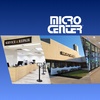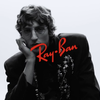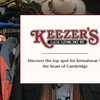{shortcode-081529ec41cd09eeddbd965ad2512f81bc721674}
On Oct. 8 at City Winery in Boston, the most popular conversation starter was asking whether or not one listens to Nate Smith. Shouldn’t that have been obvious? It was, after all, his concert.
Yet much of the crowd apparently came to City Winery not to listen to their favorite artist, but to enjoy wine in the city among anything resembling jazz — from funk to classical piano. Nate Smith, to most there, was not the author of both “KINFOLK” albums or his latest “LIVE-ACTION,” but merely this week’s artist. To be fair, a fan would only differ from a new listener in not recognizing the melody of one or two songs, as everything else that Smith played was entirely new.
Smith, the drummer and songwriter, walked out with his band: On the piano and two keyboards — sometimes simultaneously — was James Francies, on the saxophone was Josh Johnson, and on the bass guitar, constantly smiling, was Ben Williams. Immediately after sitting down, Smith started playing. During the very first minute, he gained the crowd’s respect, as indicated by the multitude of bopping heads that tried to follow his complex rhythm. Some lost track, but not due to the mistake of Smith — he was precise.
Above all, Smith’s playing was faultless. Even when the band jumped into unusual time signatures that switched at every shared look between them, Smith remained on beat, incredibly crisp. Even more, he seemed as if he was thinking beyond his playing at the moment, looking already to the next transition, or even the next concert or album, as if it was all intuitive muscle memory. Across the table, people shared notes, trying to collectively figure out which time signature was currently in play.
Jazz, usually, is reminiscent of passion. Nate Smith’s music — akin to modern jazz — felt like passion, but entirely calculated.
That is to say, his music was mostly appealing to those who prefer distinguishable rather than sensory elements. Jazz, to most, is appealing because it is impromptu, it is emotional, and the saxophone and the piano are groovy. Smith’s studio-recorded music is usually enticing only if one understands its otherness — understands that a change in rhythm or unforeseen harmonies is purposefully rich, and not pompously, incomprehensibly different for the sake of difference.
Nate Smith’s live music, however, was soulful, and, albeit calculated, visibly emotional. He maintained his precision and his hands never missed a beat, but his back moved to accommodate the emotions he was portraying, while his head turned to look at the audience and to his co-creators: the musicians on stage that turned and moved just like him, moved by the music. In his studio recordings, these movements, looks, and improvisations do not come with the audio.
“We need live music now more than ever,” he said.
Apart from introducing the band thrice, he spoke only once — and only to joke about the pronunciation of “Bahston,” quickly promote his new album, “LIVE-ACTION,” and, finally, remind the crowd that live music is important. The crowd agreed unanimously, and, at the end of his performance, stood up in ovation after “Skip Step,” which played at least three times longer than the original.
Nate Smith’s concert demonstrated that live music is important because it transforms music into a spatial and visual experience that cannot be simulated otherwise. The music might have been calculated, but his facial expressions were not.
Even though the staging confined the musicians to a particular distribution of instruments and the lighting merely existed, the most important factor of live music prevailed: The musicians on stage were accessible. Even if an audience member might not have followed the hype because of some inaccessible rhythmic or harmonious constructs, they might have watched Smith playing and seen that his hands were, in fact, moving very fast — which was undoubtedly impressive.
Read more in Arts
‘Steve’ Review: Everybody Has a Story Worthy of Being Heard












